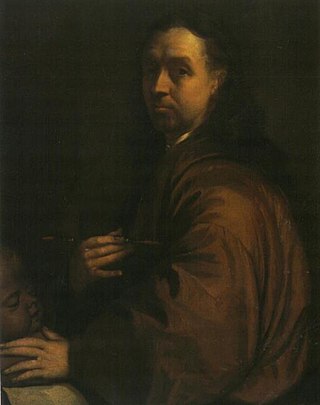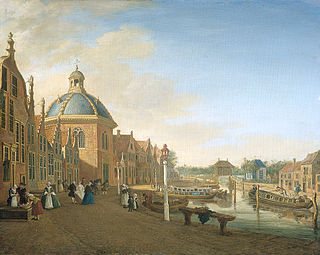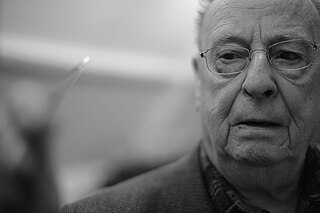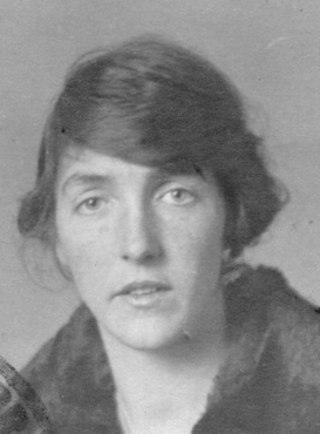Related Research Articles

Gerard van Honthorst was a Dutch Golden Age painter who became known for his depiction of artificially lit scenes, eventually receiving the nickname Gherardo delle Notti. Early in his career he visited Rome, where he had great success painting in a style influenced by Caravaggio. Following his return to the Netherlands he became a leading portrait painter. Van Honthorst's contemporaries included Utrecht painters Hendrick Ter Brugghen and Dirck van Baburen.

Jozef Israëls was a Dutch painter. He was a leading member of the group of landscape painters referred to as the Hague School and, during his lifetime, "the most respected Dutch artist of the second half of the nineteenth century."

Rachel Ruysch was a Dutch still-life painter from the Northern Netherlands. She specialized in flowers, inventing her own style and achieving international fame in her lifetime. Due to a long and successful career that spanned over six decades, she became the best documented woman painter of the Dutch Golden Age.

Judith Jans Leyster was a Dutch Golden Age painter of genre works, portraits, and still lifes. Her work was highly regarded by her contemporaries, but largely forgotten after her death. Her entire oeuvre came to be attributed to Frans Hals or to her husband, Jan Miense Molenaer. In 1893, she was rediscovered and scholars began to attribute her works properly.

Augustinus Terwesten or Augustinus Terwesten the Elder was a Dutch painter, draughtsman, printmaker and art educator. He specialized in portraits, architectural and historical themes. He was known in his time for his decorative paintings in luxurious residences many of which have since disappeared. He left a great many preparatory drawings. He was a co-founder of The Hague Drawing Academy. He worked for a long time in Berlin where he was court painter to Frederick William I of Prussia and one of the co-founders of the Prussian Academy of Arts.
Hermanus (Herman) Berserik was a Dutch painter and print maker. He was a member of the Pulchri Studio in The Hague. He studied art at that city's Royal Academy of Art, where his teachers included Willem Schrofer, Willem Jacob Rozendaal, and Rein Draijer.

Sina (Sientje) van Houten was the wife of Hendrik Willem Mesdag, the Dutch marine painter of the Hague School, and a painter herself.

Frans Schrofer is a Dutch furniture designer and industrial designer based in The Hague, Netherlands. He received a technical education in Leiden and then studied at the Design Academy Eindhoven, graduating in 1983 and founding his own design studio, Studio Schrofer, in 1984. He is known for a sculptural approach to furniture design, conscious use of materials, practicality, ergonomics, technical knowledge and for pioneering a modern, design-led approach to garden furniture styles.
Willem Schrofer was a Dutch art teacher and painter. His vision influenced the Nieuwe Haagse School movement.

Paulus Constantijn la Fargue, also Constantine Paul Lafargue, was a Dutch painter, etcher and draftsman.

Anna Sofia Palm de Rosa was a Swedish artist and landscape painter. In the 1890s she became one of Sweden's most popular painters with her watercolours of steamers and sailing ships and scenes of Stockholm. She also painted a memorable picture of a game of cards in Skagen's Brøndums Hotel while she spent a summer with the Skagen Painters. At the age of 36, Anna Palm left Sweden for good, spending the rest of her life in the south of Italy, where she married an infantry officer.

Maria Philippina (Marie) Bilders-van Bosse was a painter, famous for her landscape-paintings in an early Dutch-impressionist style.

The New Hague School is a movement in the fine arts of the fifties and sixties of the 20th century. It opposed the Cobra avant-garde movement and found its inspiration in 17th-century art and the experiences of the Barbizon School and the resulting Hague School.

Jacobus "Co" Westerik was a Dutch visual artist.
Pauline Suij was an artist who attended the Royal Academy of Art, The Hague. She belongs to the second generation of the Hague School and of Amsterdam Impressionism. She was a member of the second of these two Dutch movements of Impressionism.
Julie Henriëtte Eugénie van der Veen was a Dutch visual artist.

Anna Adelaïde Abrahams, was a Dutch still life painter.

Betsy Westendorp-Osieck was a Dutch painter, watercolourist, etcher, pastelist and draftsman who was part of the Amsterdamse Joffers painting group.

Henrica Maria Paré was a Dutch resistance member, and visual artist. Ru Paré found shelter and took care of 52 Jewish children, who all survived World War II.

Johanna Berhardina Midderigh-Bokhorst (1880–1972) was a Dutch illustrator.